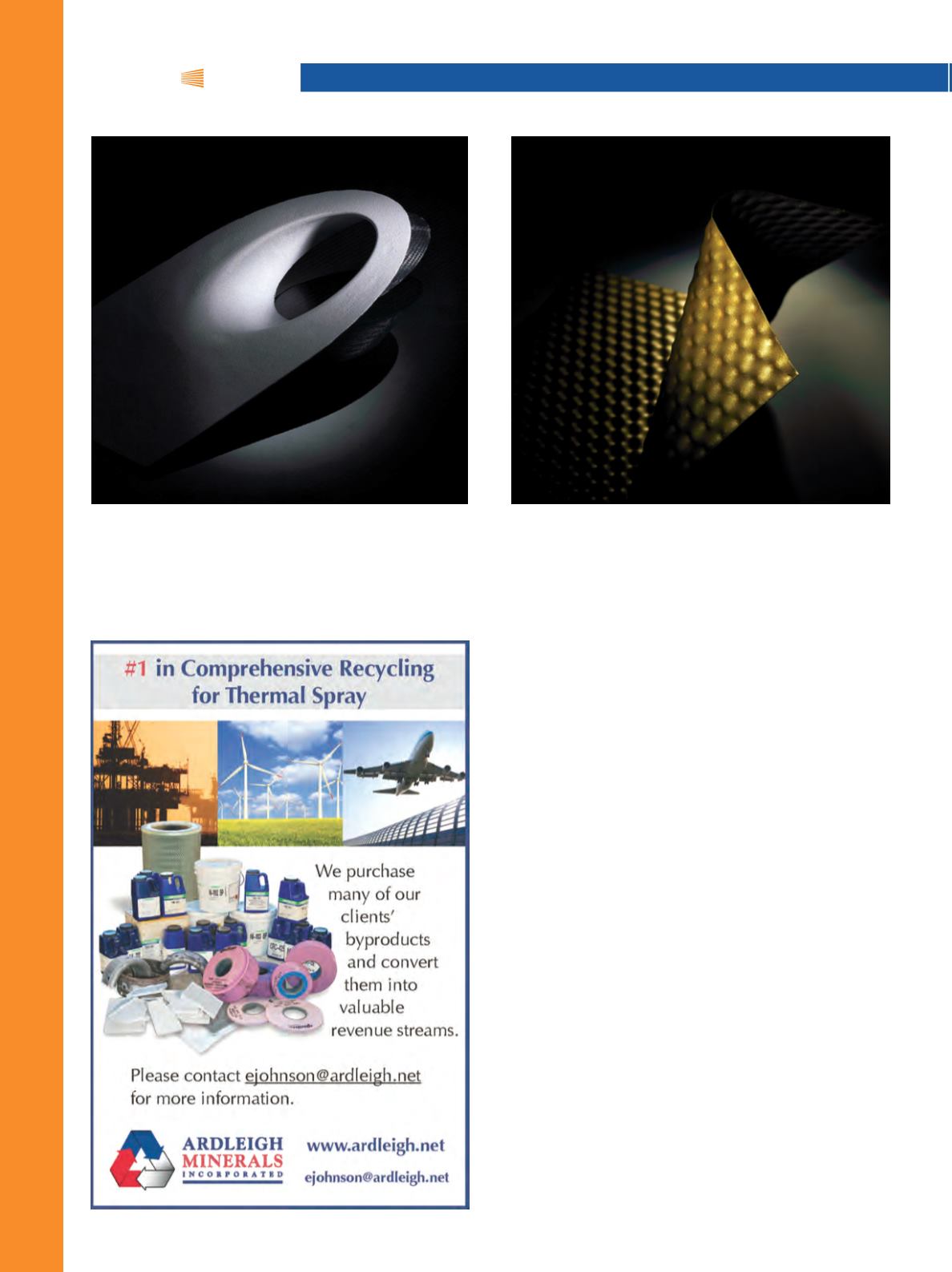

failures. In fact, 85% of the F1 grid is now using a Zircotec
coating to protect composite parts.
These coatings could also boost composites growth in
electrical applications. Electromagnetic interference (EMI)
can interrupt or degrade transmitted data signals. Carbon-
composite materials, known to be relatively transparent to
radio frequency signals, require bulky metal heat shields to
provide the right level of shielding. However, the addedweight
and bulk has deterred composite use in such applications.
Zircotec addressed this problem with a highly conductive alu-
minum-based material that is lightweight yet thin—typically
applied at less than 0.3 mm. Because carbon is an excellent
electrical conductor, a less conductive sub-layer is applied be-
fore the EMC top coating to prevent electrical contact with the
components themselves.
For design engineers, this means considerably more
scope for positioning electrical or electronic parts with-
in a vehicle and the option to use more composites in
vehicle design as well. Zircotec’s research suggests that
engineers would like to use composites for housing elec-
tronics, but poor EMC performance has restricted usage
due to the bulky metal shielding required to protect elec-
trical components.
Looking forward
In defense applications, heat management coatings
from Zircotec could be used reduce the thermal footprint
of vehicles, lowering the temperature emitted and making
them less detectable.
For more information:
Peter Whyman is sales director at
Zircotec Ltd., 22 Nuffield Way, Abingdon Oxon, OX14 1RL, +44
1235 546050,
zircotec.com.
Fig. 2 —
Coatings can reduce the heat and electrical signals
emitted from vehicles.
Fig. 3 —
ZircoFlex is used in the field in defense applications to
solve heat issues without removing vehicles from duty.
i T S S e
| a d v a n c e d m a t e r i a l s & p r o c e s s e s | F E B R U A R Y 2 0 1 5
1 4
iTSSe
|
TSS


















